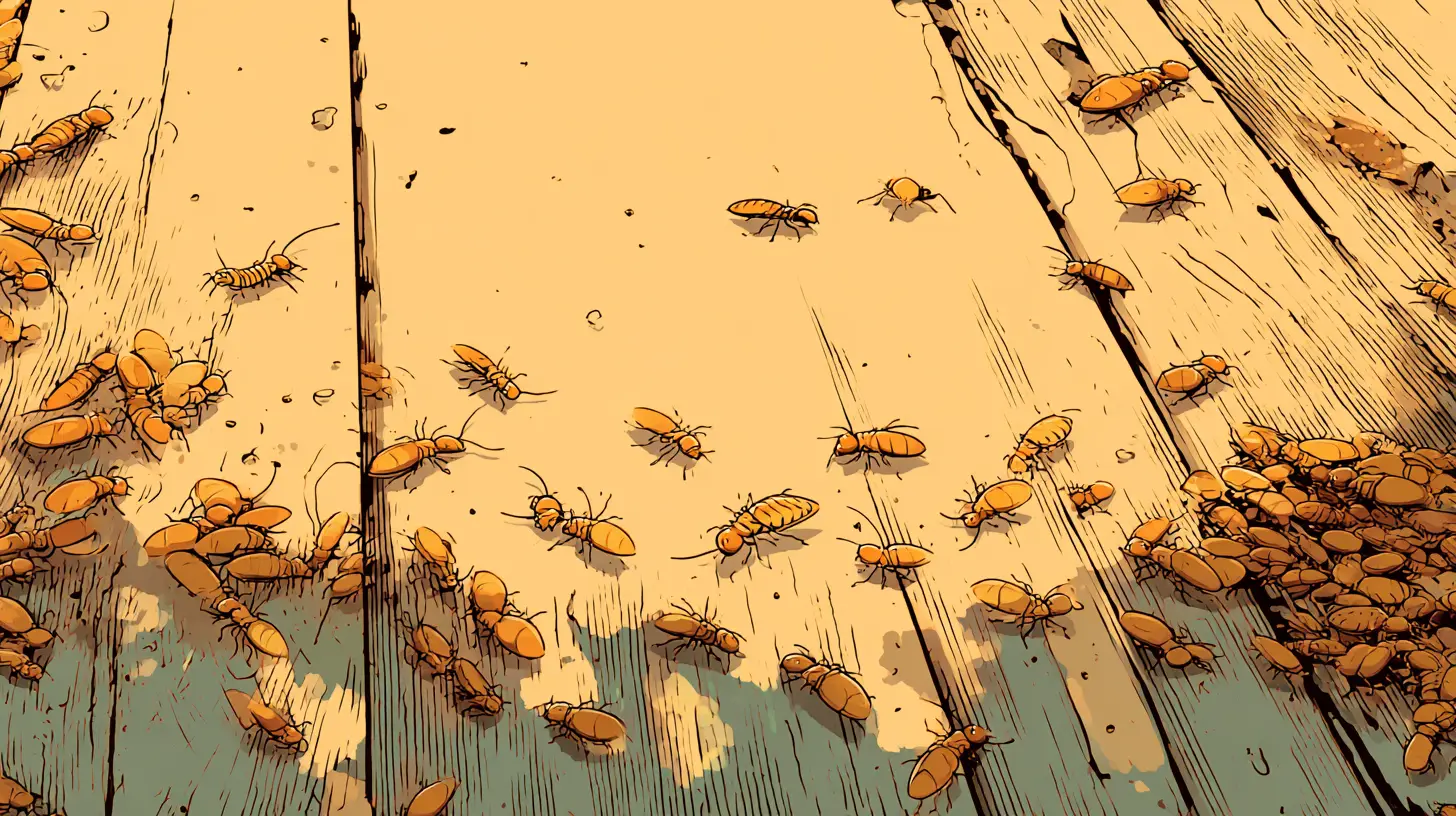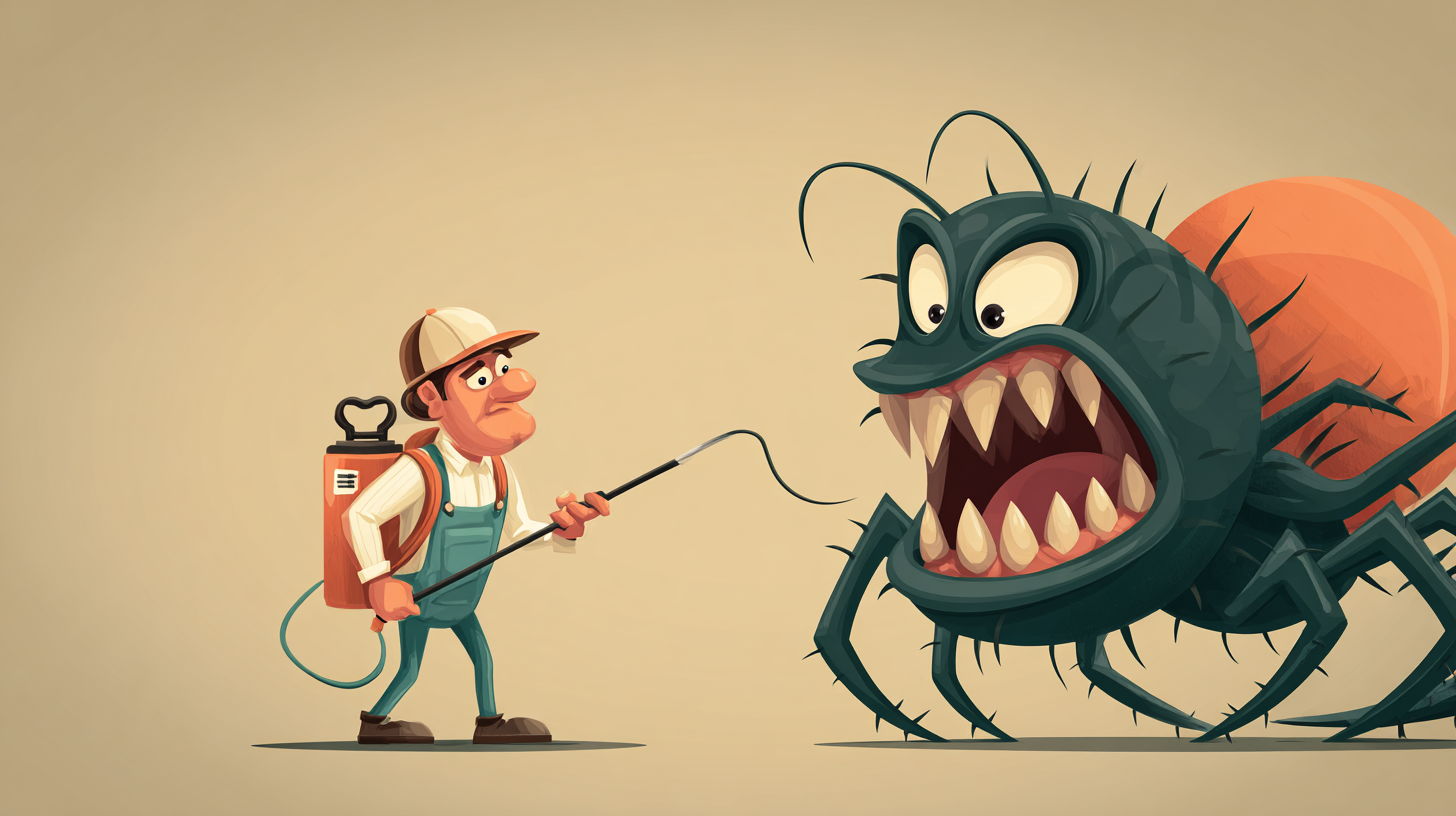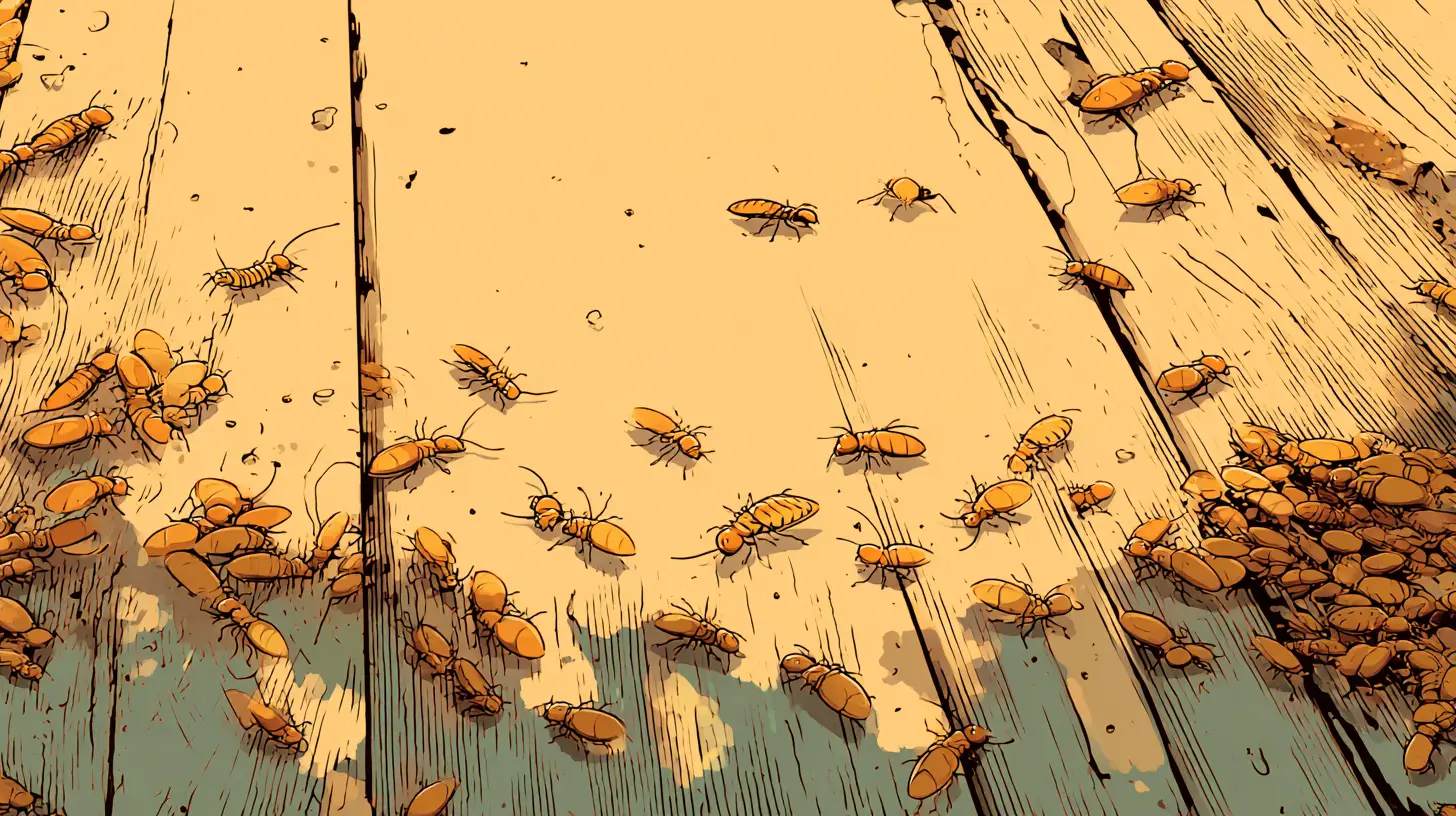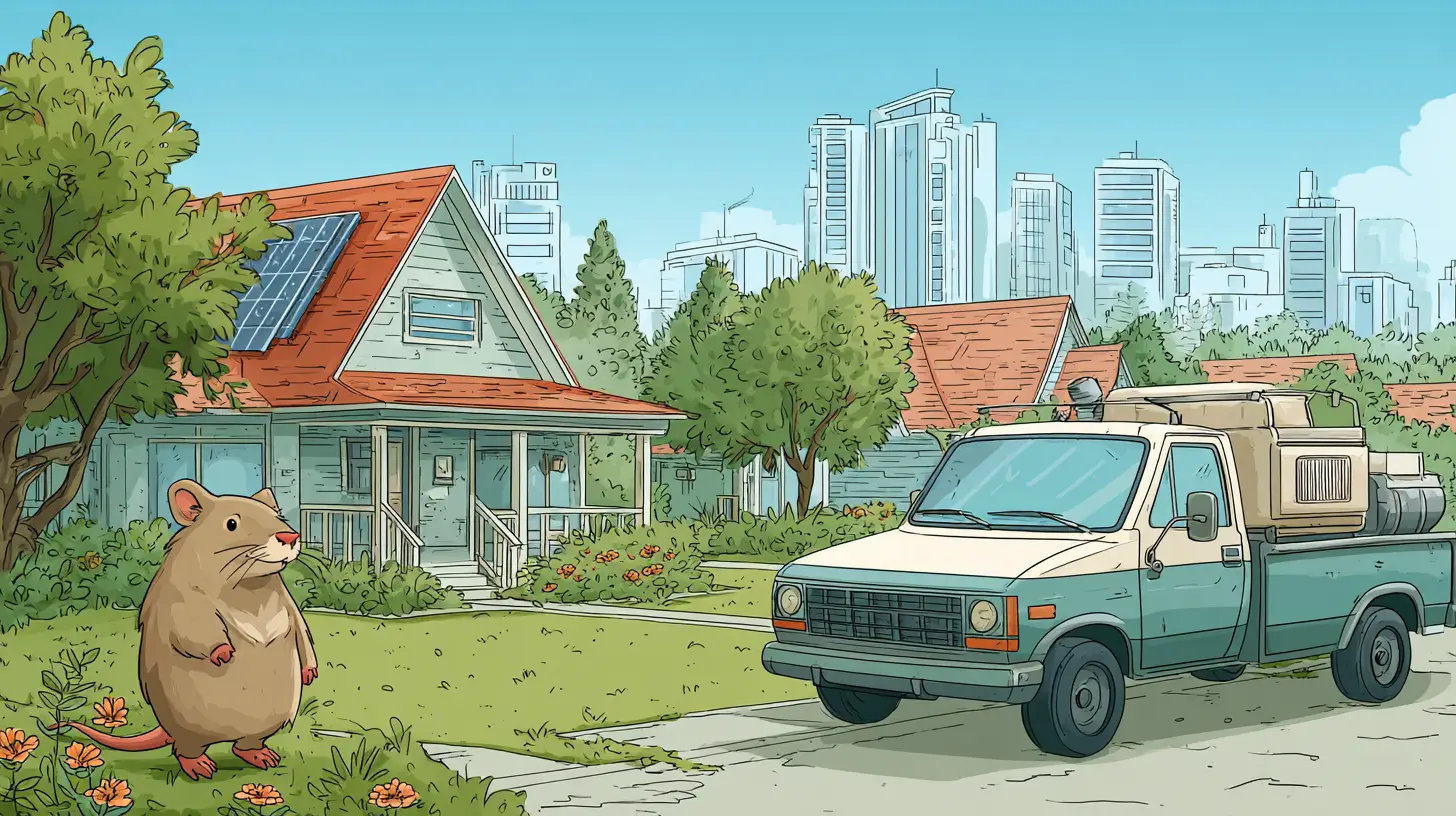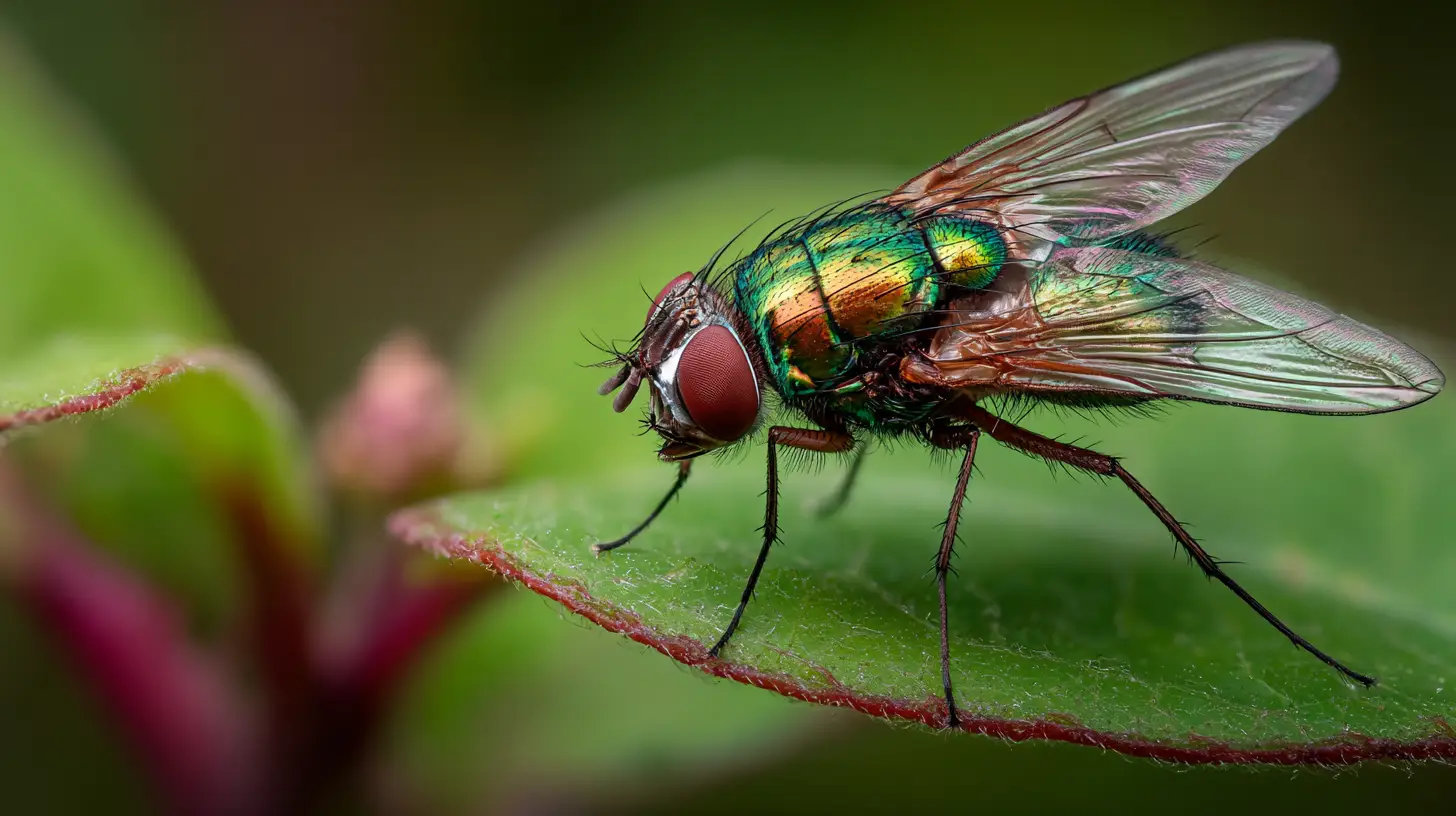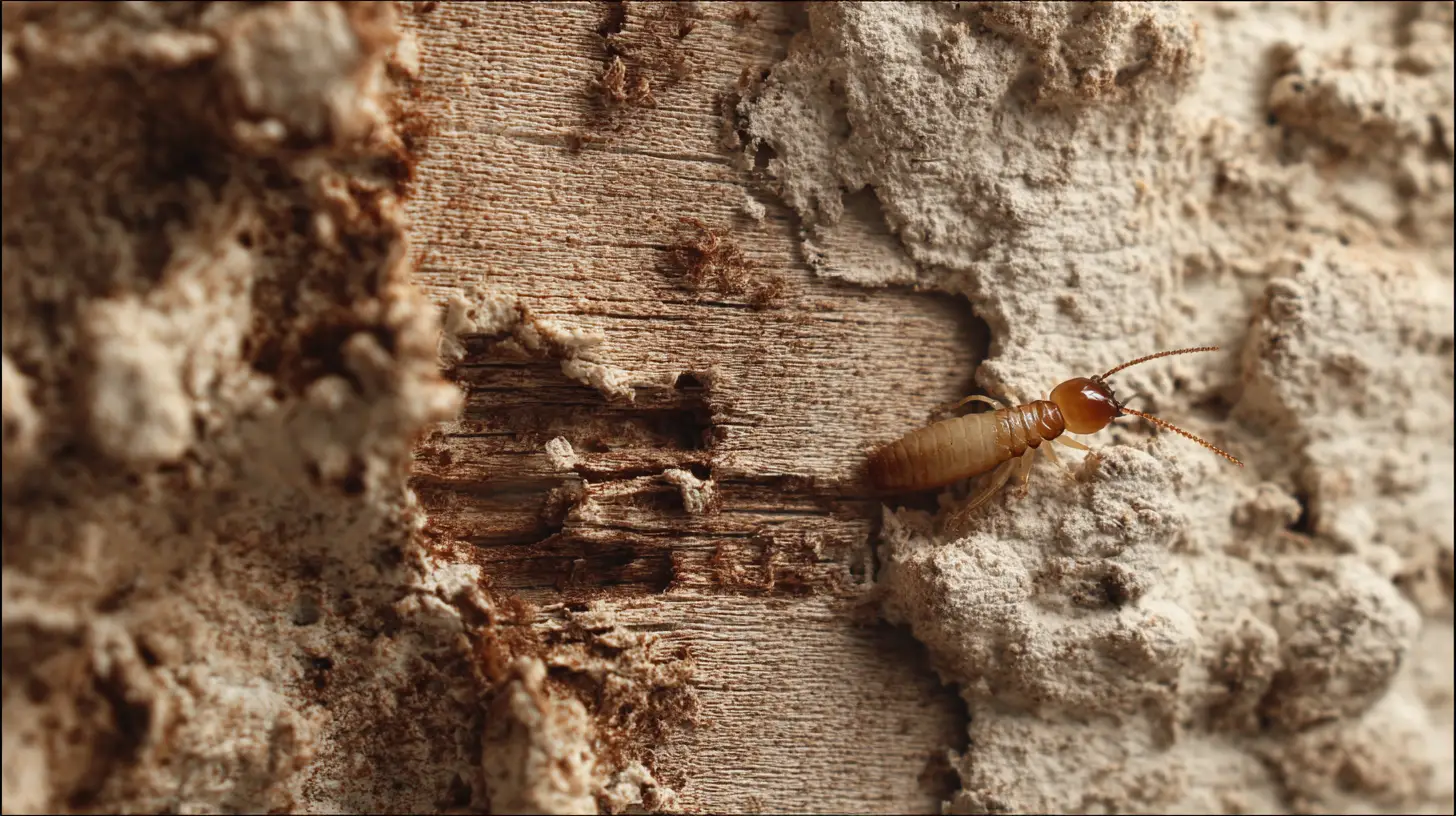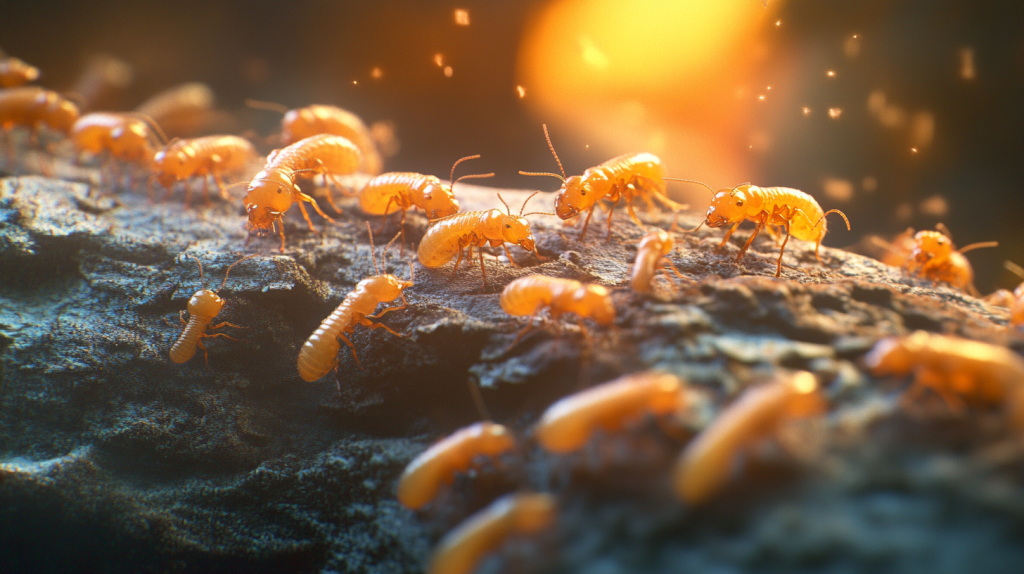
Table of Contents
Bradenton’s warm, humid climate creates ideal conditions for termites year-round. If you own property in Bradenton or Manatee County, understanding the specific termite threats in our area is essential for protecting your investment. This comprehensive guide covers everything Bradenton homeowners need to know about local termite infestations, from identifying the species to implementing effective termite control in Bradenton, FL.
Key Takeaways
- Year-Round Vigilance: Termite infestations in Bradenton, FL are a constant threat, not just a seasonal concern.
- Multiple Species Threat: Our region faces pressure from native subterranean, invasive Formosan, and West Indian drywood termites simultaneously.
- Construction Matters: Your home’s construction type significantly influences your risk level, with wood-frame structures facing the highest threat.
- Early Detection Saves Money: Regular professional inspections can identify infestations before extensive damage occurs.
- Prevention is Cost-Effective: Investing in preventative measures costs significantly less than repairing termite damage, which is typically not covered by homeowners insurance.
- Professional Help Required: DIY approaches rarely provide adequate protection against Bradenton’s aggressive termite species.
Why Termite Infestations in Bradenton, FL Are a Serious Concern
Bradenton’s subtropical environment provides perfect conditions for termite colonies to thrive. According to University of Florida researchers, more than 20 termite species have established themselves in Florida, and our region is especially vulnerable. Scientists predict that by 2040, half of all structures in South Florida—including Bradenton and surrounding areas—will face the risk of infestation by subterranean termites.
This isn’t just a seasonal concern. While termite swarms are most visible during specific times of year, colonies remain active throughout all four seasons in Bradenton’s climate. This continuous activity means termites can cause structural damage to homes and buildings year-round, often undetected until significant harm has occurred.
Common Termite Species in Bradenton, FL
Three primary termite types pose threats to Bradenton properties, each with distinct behaviors and risk profiles:
Native Subterranean Termites
These widespread termites establish large colonies in soil and build distinctive mud tubes to access wood structures.
- Identification: Light-colored bodies with straight antennae; swarmers (reproductive termites) have straight antennae, uniform wings, and are dark brown to black.
- Swarming Season: January through May, especially after warm spring rains.
- Threat Level: High for all wood-framed structures and moderate for concrete block homes.
- Damage Pattern: Primarily attack wood in contact with soil, including sill plates, subflooring, and wooden support structures.
- Bradenton Risk: Very common throughout Manatee County, particularly in older neighborhoods and properties near water.
Formosan Subterranean Termites
These invasive “super termites” form massive colonies and cause extensive damage quickly.
- Identification: Similar to native subterraneans but slightly larger; swarmers have yellowish-brown bodies.
- Swarming Season: April through July, typically on warm, humid evenings.
- Threat Level: Extremely high for all structure types, including concrete block homes.
- Damage Pattern: Aggressively attack any wooden components, even penetrating through masonry to reach wood elements.
- Bradenton Risk: Established in most coastal areas of Florida, including Bradenton and the surrounding Gulf Coast. Their presence has increased significantly in recent decades.
West Indian Drywood Termites
Unlike subterranean species, these termites live entirely within dry wood and don’t require soil contact.
- Identification: Larger heads than subterranean termites; produce distinctive hexagonal droppings (frass).
- Swarming Season: May through June in Bradenton.
- Threat Level: High for wood-frame structures, moderate for homes with limited wooden components.
- Damage Pattern: Infest structural lumber, furniture, window frames, and attics without any connection to the ground.
- Bradenton Risk: Prevalent in coastal Bradenton, especially in older buildings. Frequently introduced through infested furniture or wooden items brought into homes.
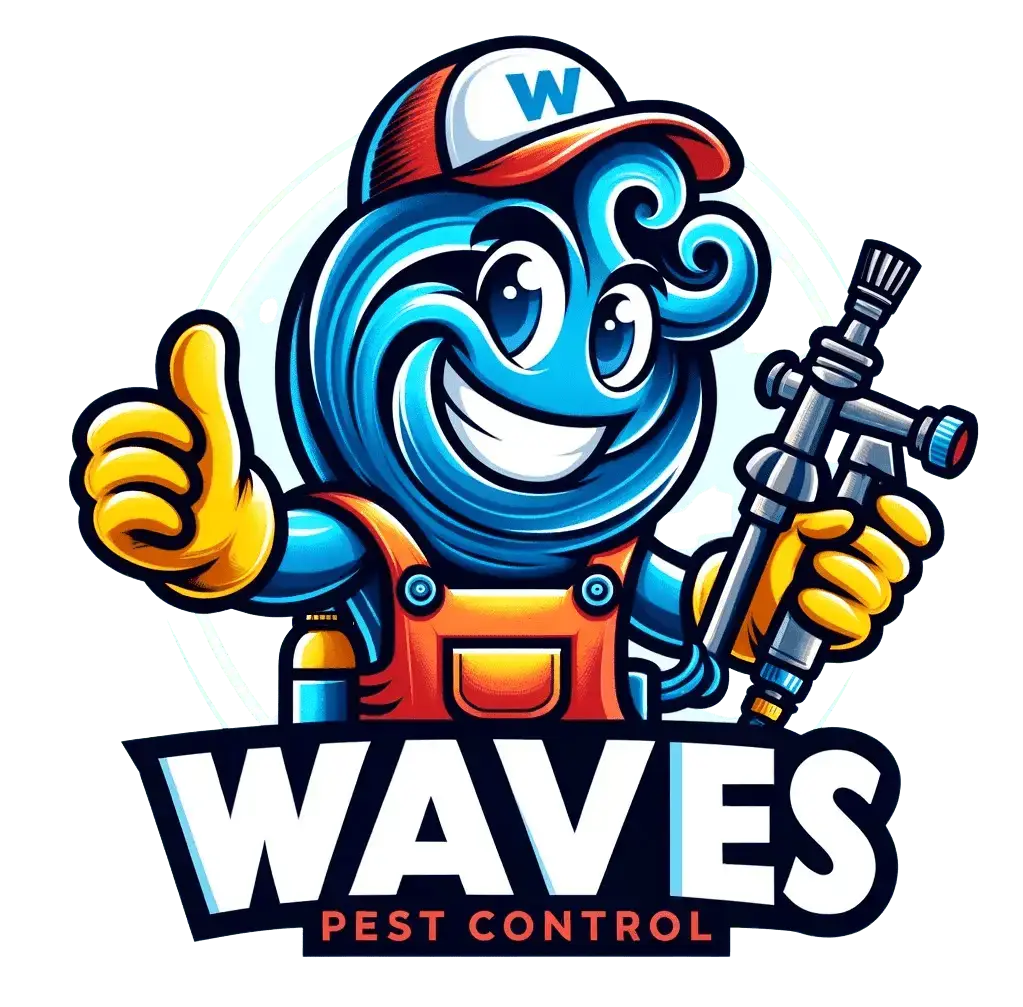
Get Termite-Free Today!
Trust Waves Pest Control for expert termite control in Bradenton, FL . Call now or request your free termite inspection online!
Request an InspectionSeasonal Patterns of Termite Infestations in Bradenton
While termite colonies remain active year-round in Bradenton’s climate, understanding seasonal patterns can help homeowners stay vigilant during peak activity periods:
Winter (December-February)
Activity Level: Moderate
- Native subterranean termites may begin early swarming in late January during warm spells
- Colony foraging continues below ground
- Damage accumulates silently within structures
Spring (March-May)
Activity Level: Very High
- Peak swarming for native subterranean termites
- Formosan termites begin swarming in late spring
- Warm, humid conditions after spring rains trigger massive reproductive flights
- Most new colonies are established during this period
- Highest likelihood of spotting flying termites around exterior lights
Summer (June-August)
Activity Level: High
- Formosan subterranean termites continue swarming into early summer
- West Indian drywood termites swarm primarily in early summer
- Frequent summer rains drive moisture levels up, creating ideal conditions for subterranean species
- Colony expansion is rapid during these months
Fall (September-November)
Activity Level: Moderate
- Swarming decreases, but established colonies continue feeding and expanding
- Damage continues accumulating within structures
- Cooler temperatures and lower humidity slow activity slightly, but termites remain active
Termite Infestation Risk By Property Type in Bradenton
Your property’s construction materials and design significantly influence termite risk levels:
Residential Homes in Bradenton
Wood-Frame Homes
Risk Level: Extremely High
- Many older Bradenton neighborhoods feature traditional wood-frame construction
- Direct wood-to-soil contact creates easy access for subterranean termites
- Multiple entry points through wooden components
- Require consistent preventative treatment and regular inspections
Concrete Block Homes
Risk Level: Moderate to High
- More resistant to native subterranean termites but still vulnerable
- Formosan termites can penetrate through small cracks and utility penetrations
- Wooden roof trusses, interior framing, and trim still provide ample food sources
- Block construction slows but doesn’t prevent infestations
Mobile and Manufactured Homes
Risk Level: Very High
- Elevated design often features wood skirting or access panels touching soil
- Multiple entry points through utility penetrations
- Often built with untreated wood components
- Moisture issues under units create ideal termite conditions
Commercial Buildings in Bradenton
Wood-Frame Commercial Buildings
Risk Level: High
- Older downtown Bradenton businesses often feature wood-frame construction
- Historic buildings may have significant untreated wood components
- Continuous operation can make treatment logistically challenging
Concrete/Steel Commercial Structures
Risk Level: Low to Moderate
- Primary structure less vulnerable, but wooden fixtures and interior components still at risk
- Large footprints with multiple soil contact points create more potential entry locations
- Irrigation systems and landscaping may increase moisture near foundations
Warning Signs of Termite Infestations in Bradenton Homes
Early detection is critical for minimizing damage. Watch for these telltale signs:
Subterranean Termite Indicators
- Mud tubes (pencil-width tunnels) along foundation walls, piers, or plumbing
- Soft, damaged wood that sounds hollow when tapped
- Sagging floors or doors that suddenly become difficult to close
- Piles of discarded wings near windows, doors, or light fixtures after spring swarms
- Visible swarmers (flying termites) inside or around your home
Drywood Termite Indicators
- Small piles of pellet-shaped droppings (frass) resembling coffee grounds or sawdust
- Hollow-sounding wooden beams, trim, or furniture
- Tiny holes in wood surfaces with evidence of frass
- Blistered or damaged wood that appears “carved out”
- Discarded wings from swarmers, often found on windowsills
Effective Prevention Strategies for Bradenton Properties
Protecting your Bradenton home from termites requires a multi-faceted approach:
Pre-Construction Treatments
If building a new home in Bradenton, incorporate:
- Pre-construction soil treatments with long-lasting termiticides
- Physical barriers such as stainless steel mesh around foundation perimeters
- Treated lumber for all ground-contact components
- Proper grading and moisture control measures
For Existing Homes
- Schedule annual professional termite inspections (semi-annual for high-risk properties)
- Maintain a termite protection contract with a licensed Florida pest control company
- Consider preventative treatments such as perimeter bait stations or liquid termiticide barriers
- Repair leaking roofs, pipes, and air conditioning units promptly to reduce moisture
- Keep mulch at least 6 inches away from foundation walls
- Ensure at least 6-8 inches clearance between soil and any wood components
- Store firewood and lumber away from the house and elevated off the ground
- Improve ventilation in crawl spaces and attics
- Seal cracks and openings in the foundation, especially around utility penetrations
Landscape Management
- Remove dead trees and stumps from your property
- Keep trees and shrubs trimmed away from the house (at least 6 inches clearance)
- Consider replacing wood mulch near the foundation with gravel or pine straw
- Direct irrigation sprinklers away from the foundation
- Ensure proper drainage away from the structure
Treatment Options for Termite Infestations in Bradenton
If you discover termites in your Bradenton home, prompt, professional intervention is essential:
For Subterranean Termites (Native and Formosan)
- Liquid Termiticide Barriers: Creates a treated zone in the soil that kills or repels termites
- Termite Bait Systems: Stations installed around the perimeter to eliminate colonies
- Localized Wood Treatments: Direct application of termiticides to affected areas
- Combination Approaches: Often most effective, especially for Formosan infestations
For Drywood Termites
- Spot Treatments: Injection of termiticides into localized infestations
- Heat Treatment: Whole or partial structure heating to lethal temperatures
- Fumigation (Tenting): The most comprehensive treatment for widespread drywood infestations
- Wood Replacement: Removing and replacing heavily damaged structural elements
If you’re struggling with termites, our Termite Control Services in Bradenton can help.
Frequently Asked Questions (FAQs)
How often should Bradenton homes be inspected for termites?
At minimum, annual professional inspections are recommended for all Bradenton properties. Homes with previous infestations, those near water bodies, or properties with significant wood components should consider semi-annual inspections.
Can termites damage concrete block homes in Bradenton?
Yes. While concrete itself isn’t edible to termites, block homes still contain wooden elements like roof trusses, door/window frames, and interior wall framing that termites can damage. Formosan termites are particularly skilled at finding entry points through small cracks and utility penetrations in block construction.
What time of year should I be most concerned about termites in Bradenton?
Spring (March through May) sees the highest termite activity with multiple species swarming. However, termite colonies remain active and continue causing damage year-round in Bradenton’s warm climate. Year-round protection is essential.
Are newer homes in Bradenton less susceptible to termite infestations?
Newer homes built to modern Florida building codes typically incorporate pre-construction termite treatments and physical barriers, reducing initial risk. However, these protections diminish over time, and all homes in Bradenton eventually become vulnerable without ongoing preventative measures.
Will homeowners insurance cover termite damage in Bradenton?
Most homeowners insurance policies specifically exclude damage caused by termites and other pests, considering it preventable through proper maintenance. Some specialized policies offer limited coverage, but prevention remains the most cost-effective approach.
How can I tell the difference between flying ants and termite swarmers in my Bradenton home?
Flying ants have pinched waists, bent antennae, and unequal wing pairs. Termite swarmers have straight bodies, straight antennae, and equal-length wing pairs. If in doubt, capture a specimen and have it identified by a pest control professional or the Manatee County Extension office.
What should I do if I’m buying a home in Bradenton?
Always get a thorough termite inspection (WDO – Wood Destroying Organism inspection) before purchasing. Review the property’s termite treatment history and any existing warranty coverage. Consider the construction type and nearby environmental factors when assessing potential risk.
How much does termite protection typically cost in Bradenton?
Annual termite protection contracts in Bradenton typically range from $300-900 per year, depending on home size, construction type, and the level of protection provided. This preventative cost is minimal compared to the potential expense of structural repairs after an untreated infestation.

